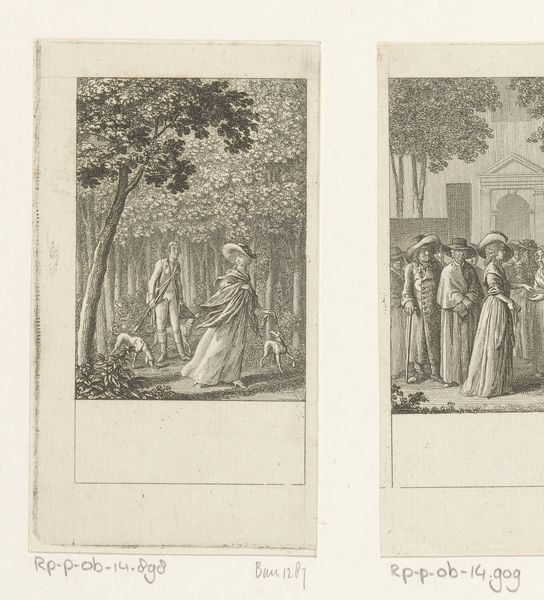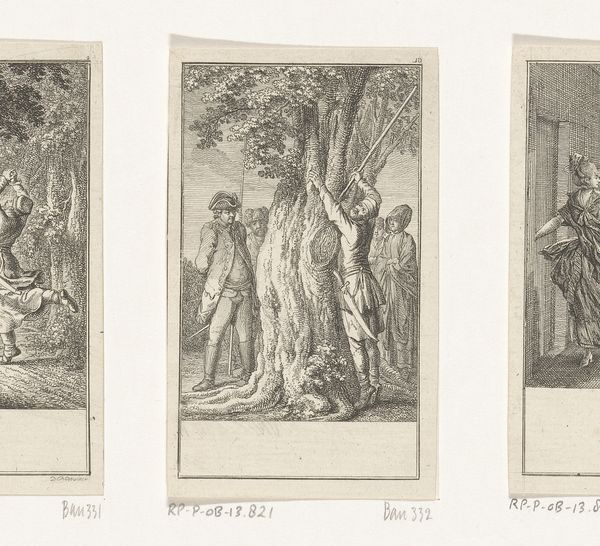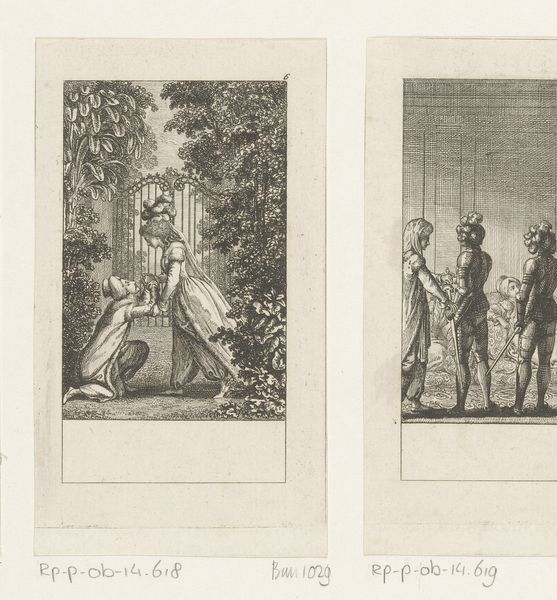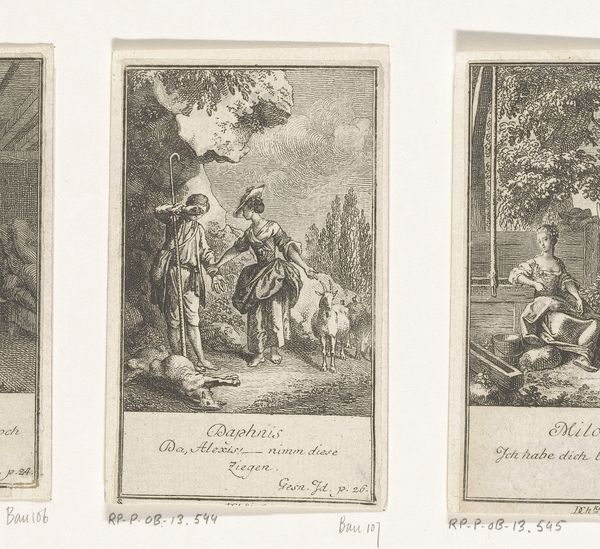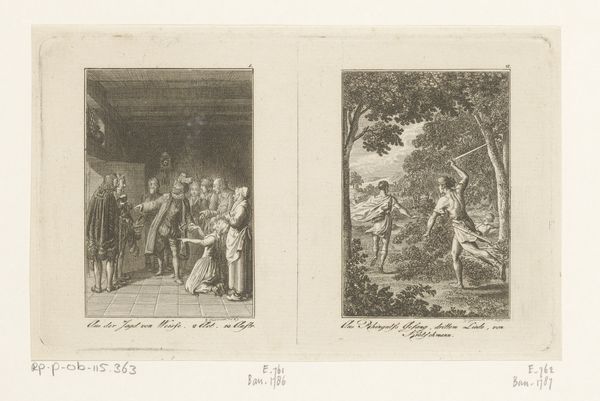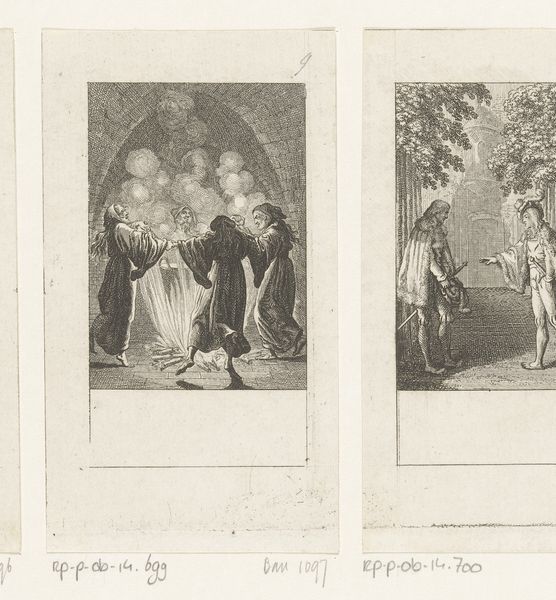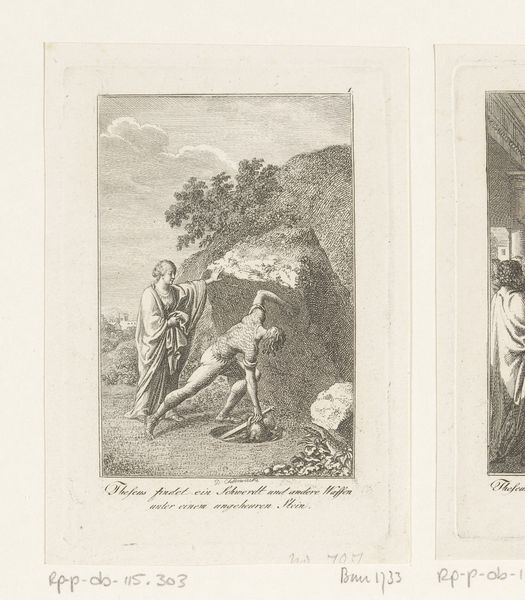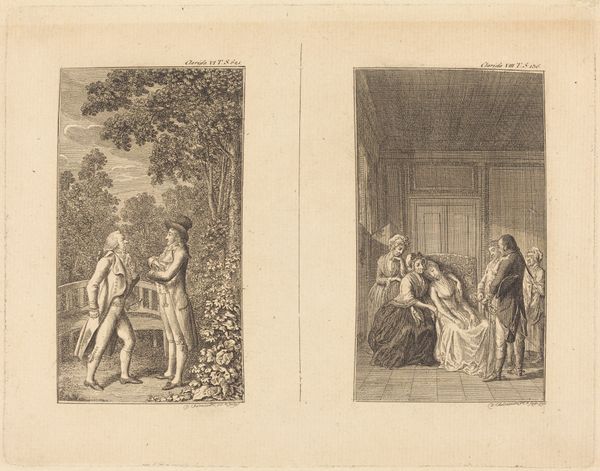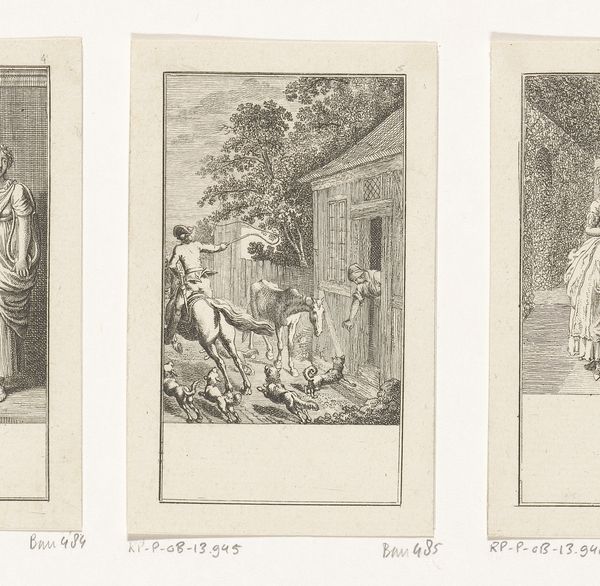
Gil Blas wordt overvallen op zijn weg naar Salamanca 1783
0:00
0:00
danielnikolauschodowiecki
Rijksmuseum
Dimensions: height 116 mm, width 64 mm
Copyright: Rijks Museum: Open Domain
Curator: Ah, I see we’re looking at Daniel Nikolaus Chodowiecki’s print, "Gil Blas wordt overvallen op zijn weg naar Salamanca", created around 1783. It’s part of the Rijksmuseum collection. The print, an etching, feels to me like it whispers of another era. Editor: Whispers indeed. Immediately, I'm struck by the image on the left side and its potential to represent vulnerability and social injustice. The image of a man getting mugged feels both personal and representative of a system where people, especially those who may already be struggling, are preyed upon. There is a kind of raw depiction. Curator: It's intriguing, isn’t it? You have this rather pastoral scene disrupted by, I presume, highwaymen. There's an air of inevitability, as if fate has dealt Gil Blas a particularly cruel hand on his journey. And next to it you see Gil Blas maybe entering an interior...a new life about to start, a new job opportunity... Editor: That's interesting...But consider what these etchings might have symbolized beyond a simple tale. Is Chodowiecki hinting at how economic disparities create scenarios of desperation, pushing some to thievery while leaving others vulnerable? How does this artwork reflect societal inequalities? Curator: Possibly. His etchings, usually, feel more like morality tales than indictments of social systems, yet there's undeniably a layer of human drama at play. I see it also as Chodowiecki illustrating the ups and downs of life; there’s also a feeling of adventure, in my opinion. He clearly reveled in portraying human foibles and the unexpected turns our paths take. I admire the clean lines and fine details he achieves with the etching technique! Editor: I suppose viewing it through the lens of adventure offers a different emotional reading. Maybe it’s not simply about hardship, but about resilience—how the characters navigate challenging social terrain. However, the medium itself raises a question. Why etching? How does this choice speak to accessibility of art and storytelling? Curator: Good point. The reproducibility of prints would’ve made this story, and these visuals, far more accessible to a broader audience than an oil painting, for instance. Perhaps this reflects the democratization of knowledge. What you’ve offered makes me now consider not just what the print depicts, but its inherent capacity to spread narratives. Editor: Exactly! And how that spreading might inspire conversations and even, potentially, fuel social change, by highlighting stories about wealth, class, poverty, precarity, and access. So much for such a tiny etching to say. Curator: Absolutely. It makes you wonder, doesn't it, about the echoes of stories through time and the art that carries those echoes forward. I suppose it’s true, everything old can be new again, provided someone is around to share it with us and reinterpret the meaning. Thank you for unveiling layers of context I wouldn’t have perceived on my own! Editor: My pleasure! The dialogue between art and our lived realities is never-ending and profoundly rich.
Comments
No comments
Be the first to comment and join the conversation on the ultimate creative platform.
